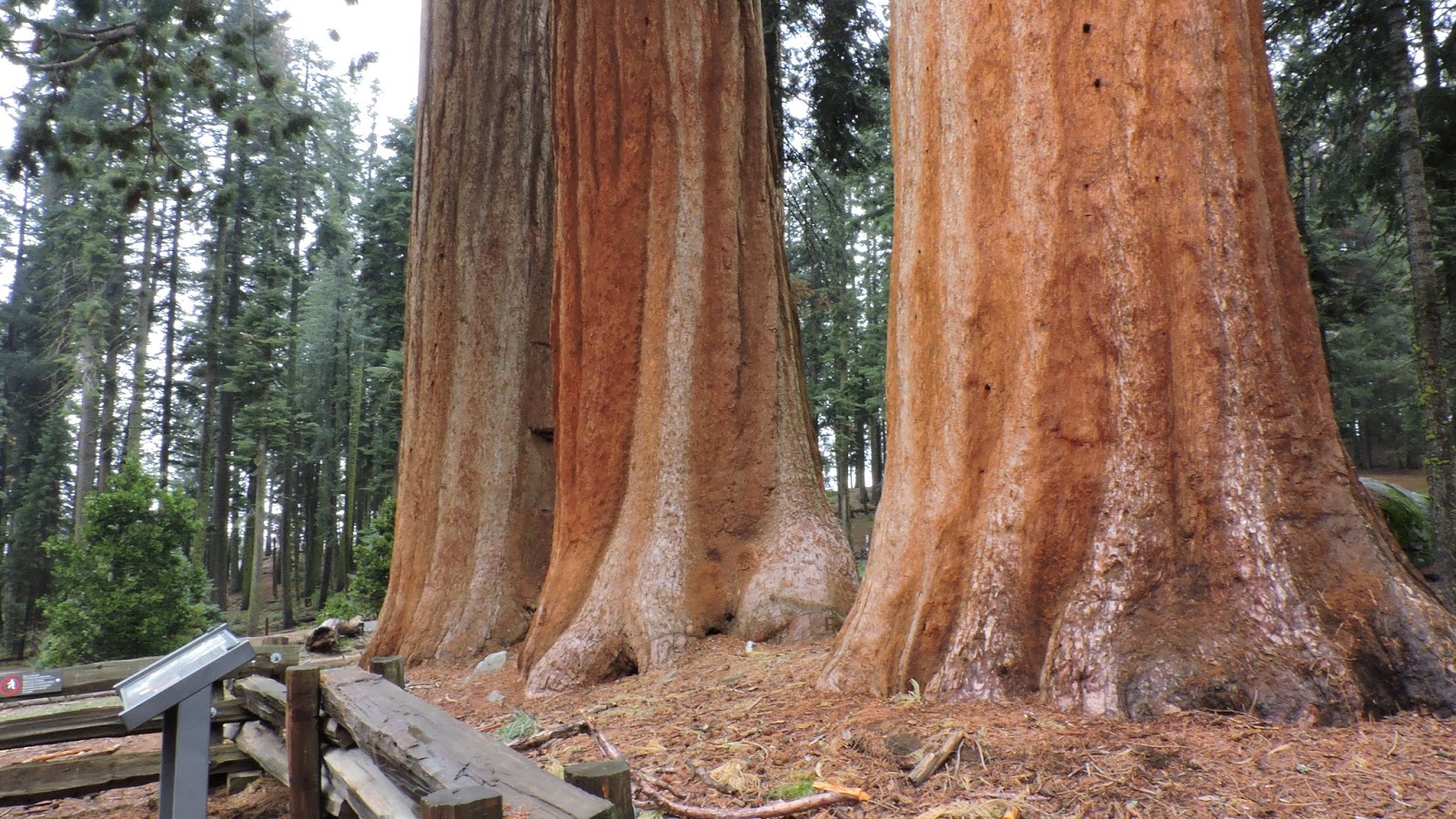We are surprised by a plethora of Dogwood trees in bloom. They are around every turn!

Standing up or laying down, these trees are enormous. Imagine a tree lying in your yard big enough to drive through.
These babies are even wide enough to use as one lane bridges - just drop it across a river and drive over!
We reach the location of the General Sherman. Where we parked 10 or 12 years ago is now designated handicap parking only. The general public must keep on driving up and around until we arrive at a much larger parking lot. From there we must walk back down to the General. Not bad, but ultimately we will have to trek back up - and we are at 7,000 feet above sea level.

And there he is, the Sequoiadendron giganteum. By volume, he is the largest known living single-stem tree on earth. Now, to be perfectly honest, he is neither the tallest (that would be the Hyperion redwood on California's coast, nor is it the widest (cypress and baobab have greater diameters), nor is it the oldest. (See our earlier post, http://www.thetravelerstwo.net/2014/12/the-methusaleh-tree.html. Methusaleh is over on the eastern slopes of these Sierras in the White Mountain range. That's not too far from here as the crow flies.) However, the General Sherman, with a height of 275 ft, a diameter of 25 feet, an estimated bole volume of 52,513 cu ft, and an estimated age of 2,300-2,700 years, is nevertheless among the tallest, widest and longest-lived of all trees on the planet.
If you were to uproot this guy (right after the National Park Rangers shot you dead), you could place it in the middle of a metropolitan highway, and it would block three lanes of traffic. Or you could lay it on a Super Bowl football field and it would reach from one goal line to the opposite 9 yard line. If it was even possible to get a set of balance scales big enough, you would have to get 10 blue whales to balance out the ol' General Sherman.
Spire tops, rounded tops and snag tops define at a glance the adolescent, mature, and elder Sequoia. Sherman is an elder so he has a snag top. That means he's as big as he's gonna get, not getting enough nutrients to feed the top of his trunk, and is only feeding what he can. But he still has many, many years to live.
As with the General Grant tree, all mention of exactly who the real General Sherman was has been removed from the interpretative signs, making me a not-happy camper. (See our earlier post: http://www.thetravelerstwo.net/2015/03/the-redwood-forest.html
.JPG)





.JPG)
.JPG)
.JPG)




.JPG)
.JPG)

.JPG)











.JPG)

.JPG)
.JPG)



.JPG)















